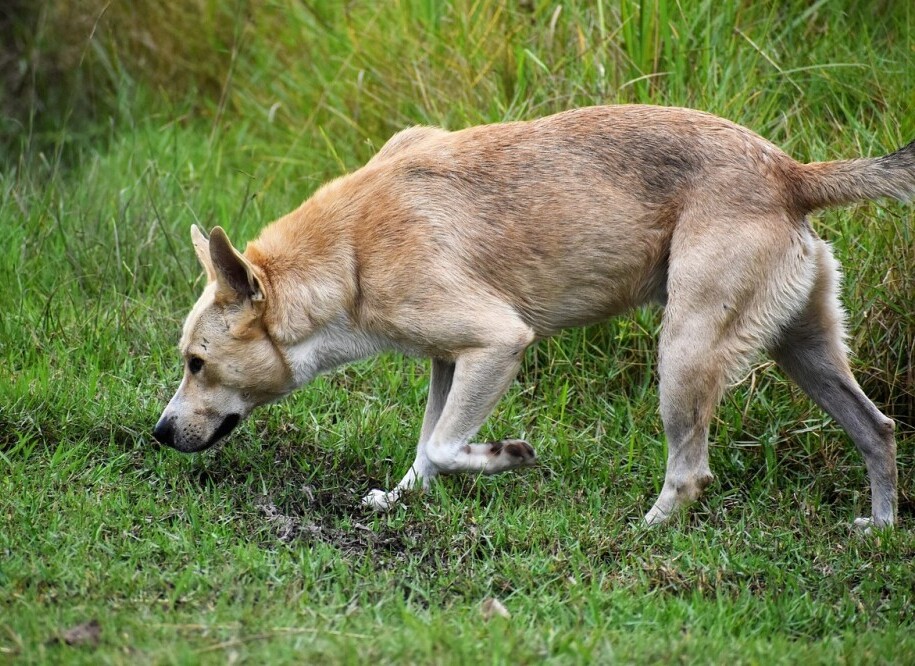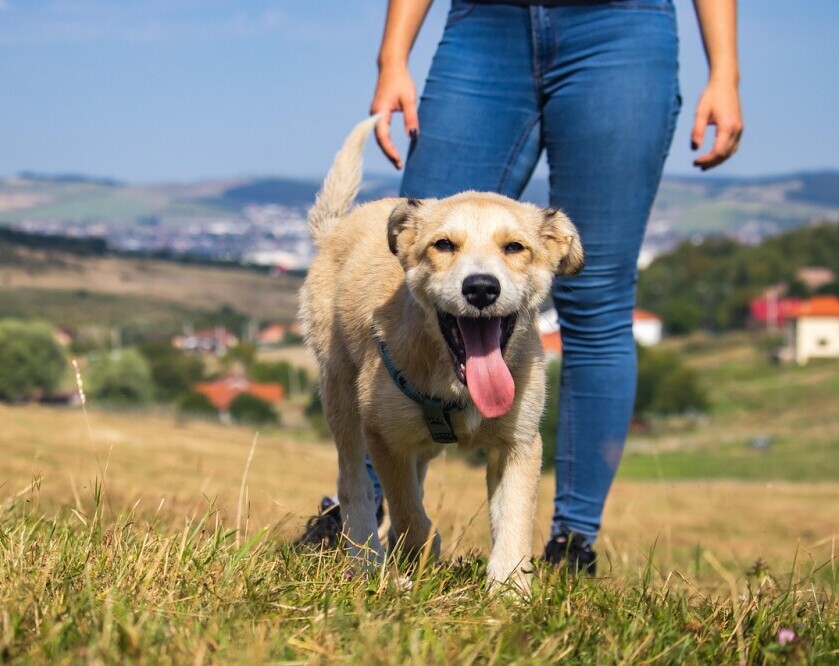
A few of the links in this post are affiliate links. If you buy something, we may earn a small commission (no extra bones from your wallet 🐾). Thanks for helping support the site and all of the dog adventures!
Take a deep breath and try not to panic. It’s natural to feel anxious when your dog goes missing, but keeping a clear head is essential for taking effective action to bring them back safely. We’re going to walk you through the best course of action when your dog goes missing.
Start by searching your home thoroughly. Dogs can hide in the most unexpected places, especially if they’re feeling scared or overwhelmed. Check every corner, behind furniture, and anywhere your dog loves to curl up. Make sure they didn’t get sneak into any spots when you weren’t looking like a closet or crawl space.
If you’re absolutely sure that they aren’t in the house, then you need to consider if they could have gotten out. Was there a door or window open that they could have escaped? Did you leave them in the car? If they definitely aren’t in the house, then check the garage, and then the yard or immediate area around your home.
Expand your search to the nearby neighborhood. Walk around your block, calling your dog’s name, and asking neighbors if they’ve seen any sign of your furry friend. Sometimes a dog can wander just a short distance before settling down or getting tangled up somewhere. They might be just down the road sniffing something.
If they definitely aren’t in the general vicinity, it’s time to reach out to local animal shelters and veterinarians. Providing them with your dog’s description and details ensures they can keep an eye out if someone brings your dog in.
Many shelters post found animals online, so checking their websites can also be helpful. Today there are many local sites and groups dedicated to posting found animals, so check online for local resources for linking lost pets with their owners.
Create ‘Lost Pet’ flyers with a clear, recent photo of your dog, their name, your contact information, and any distinguishing features. Place these flyers around your local area on poles, community spaces, and businesses that allow it. Get the word out so if people do spot your dog, they will know to contact you.
Social media can be a powerful tool, too. Share a post with the same details on platforms like Facebook and neighborhood-specific apps like Nextdoor. Communities often rally together to help locate a missing pet, and the more eyes you have searching, the better.
Tracking devices increase the chances of finding a lost dog quickly. See recommended options in Smart Collars and GPS Trackers.

Preventive Measures to Keep Your Dog Safe and Close
A solid prevention plan can ease your worries about your dog getting lost. Microchipping is one of the best steps you can take. This tiny chip, implanted under your dog’s skin, contains your contact information, allowing shelters and vets to reunite you if your pet goes astray.
A well-fitted collar with an ID tag is essential. The tag should have your current phone number and address. It’s a simple yet effective way to ensure anyone who finds your dog knows how to reach you. This is an old but reliable way to get whomever finds your dog the best chance at reuniting you.
Teaching your dog basic recall commands like “come” could be a lifesaver. Practice these commands regularly in a safe and controlled environment to reinforce them. The stronger your dog’s response, the better your chances of preventing them from running off during outdoor adventures. Make sure your pup knows not too wander too far without you.
Always secure your home and yard. Repair any gaps or broken sections in fences, and ensure gates latch properly. If you’re out on walks, invest in strong leashes and harnesses that suit your dog’s size and strength. Don’t give your dog any easy opportunities to get out.
Avoid leaving your dog unattended in unfamiliar places or alone in the yard for long periods. If you’re in a new environment, keep your dog closely supervised. Dogs, especially the curious or playful ones, might wander off chasing something interesting. If they catch a whiff of something, they could be running off before you know it.
Managing multiple dogs safely reduces the risk of escapes. Learn strategies in Balancing Multi-Dog Households.

Effective Strategies for Finding a Lost Dog
Rally your neighbors and friends. Organize a search party and assign different areas to cover. A familiar face might be all it takes for your dog to come running out of hiding. The more people that know about it, the better. This is especially true for family members and neighbors that may know your dog already.
Set up a station with your dog’s favorite blanket or your worn clothing in the area where they went missing. The familiar scent can guide a dog back to a known spot. Your scent may just lead your dog right back home.
Use treats or their favorite toy as bait. The sound of a treat bag or the squeak of a beloved toy can lures dogs out from their hiding spots. Treats are something that most dogs just won’t be able to resist!
Don’t hesitate to call in the professionals if you’re having trouble. Some services specialize in tracking lost pets and have an array of tools at their disposal. Pay regular visits to local animal shelters and pounds. Sometimes phone updates aren’t reliable, so a personal visit can help you spot your dog quickly if they show up there.
Being prepared with a first aid kit is crucial if your dog is found injured. Learn how in How to Make a First Aid Kit for Your Dog.

Leveraging Resources and Services for Lost Dogs
Embrace technology by using GPS pet trackers. These nifty gadgets can provide real-time location updates on your dog’s whereabouts, making it easier to pinpoint their location quickly. You can have peace of mind knowing that you will be able to see where your pup may have run off to.
Network with online communities and lost pet websites. Platforms like Lost Dogs of America or PetAmberAlert can increase the visibility of your search and connect you with other pet owners who can offer advice or assistance based on their experiences.
Pet detective services are available and might be worth considering. These professionals use various investigative methods to locate lost pets effectively, including scent-tracking dogs and other technologies.
Don’t hesitate to inform local police departments, especially if you suspect theft or if your dog is commonly found roaming busy streets. Police may have their own resource for lost animals.
Register your dog with pet recovery services like HomeAgain. These programs provide an extra layer of support through databases and alerts sent out to local vets and shelters, increasing the chances of a swift return.

Understanding the Emotional Impact and Moving Forward
Losing a pet is a rollercoaster of emotions, and it’s completely normal to feel overwhelmed. It’s crucial to give yourself time and space to process the situation. Whether your pet returns home safely or not, emotions can run high, and acknowledging them is the first step towards healing.
Consider reaching out to support groups or pet loss counselors for guidance and comfort. These resources offer a compassionate ear and advice from people who’ve been in your shoes.
Building a strong support network around you is vital. Friends, family, or fellow pet owners can provide the emotional backing you need during this tough time. Sharing your story and hearing others can often bring solace and valuable insights.
Think about creating a prevention plan moving forward. Having learned from this experience, put measures in place to avoid similar situations in the future. Whether it’s better training or upgrading equipment, every little step counts.
If your dog returns, celebrate the reunion safely. Re-entry should be joyful but controlled, making sure your dog feels nurtured and secure without overwhelming them. Treat them to some special pampering and take it as a new beginning for both of you.
